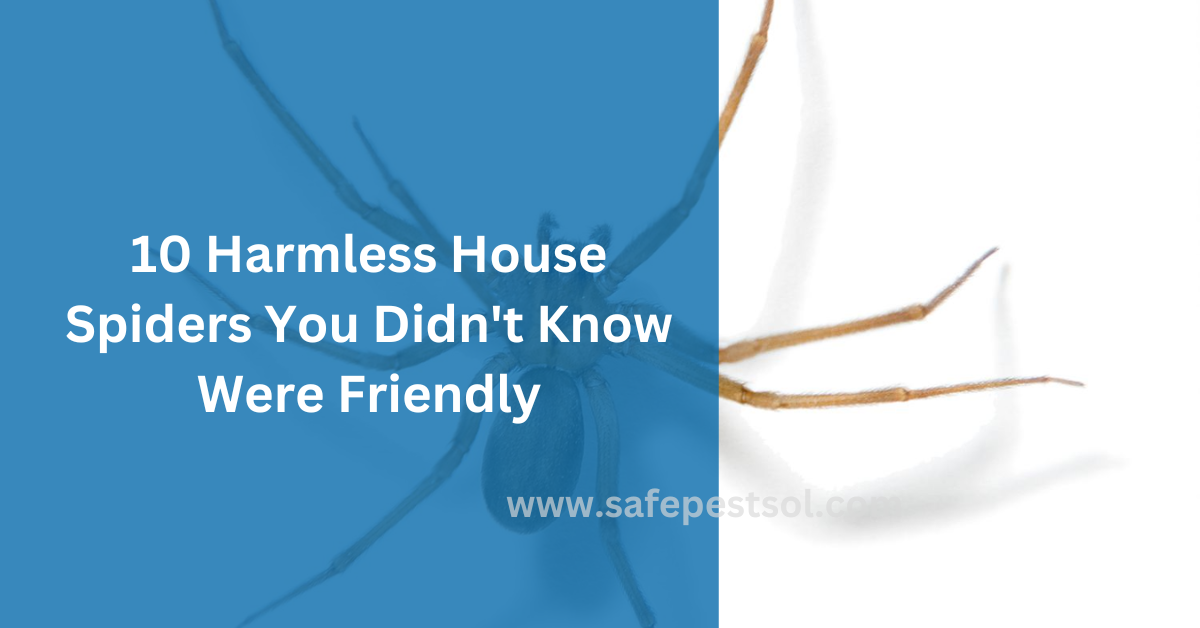10 Harmless House Spiders You Shouldn’t Afraid About
House spiders tend to cause fear or unease, but most of them are not a real danger to humans. Although some spiders can seem intimidating, most of those found inside are harmless like cellar spider, American spider and more.
In fact, they prefer to stay away from people. Let’s dig out some common myths and find out the 10 harmless spiders you might have around the house.
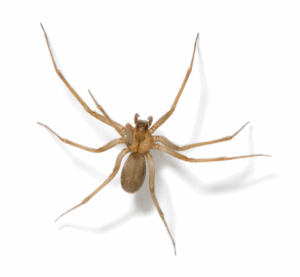
Isn’t all spiders dangerous?
Despite what movies or urban legends might suggest, not all spiders are dangerous to humans. Technically, a spider would only be considered poisonous if it caused harm when eaten something that rarely happens in real life.
So, while some spiders can be dangerous and may look spooky, the majority are completely harmless and avoid human interaction whenever possible.
Top 10 Household spiders that are not harmful
1.Cellar Spiders
Cellar spiders can be usually encountered in Canadian and American houses. They exist in two general varieties short-bodied and long-bodied. Characterized by their grayish-yellow color and elongated, slender legs, they prefer damp and dark environments like basements, garages, and warehouses.
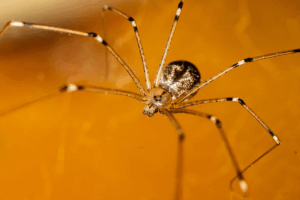
Cellar spiders are harmless to humans and prey on other spiders and insects, making them a natural indoor pest control friend. Though there are many myths they have extremely poisonous venom, but cellar spiders are harmless. Their jaws cannot break human skin, and their venom is medically insignificant.
2.Jumping Spiders
Jumping spiders are predators with excellent eyesight and agility, which enables them to jump several inches to catch prey. They stray into homes sometimes or find their way inside through firewood or potted plants.
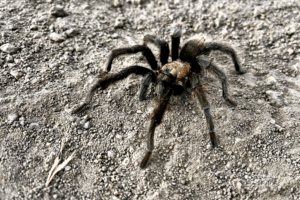
Their small bodies, usually colored red or white in patterns, tend to confuse more lethal organisms such as black widows oftenly. Jumping spiders are not dangerous to humans, though. They prefer not to confront humans and are more occupied with catching pest insects.
3.Funnel Weavers
Funnel weavers belongs to the family Agelenidae, are named after the characteristic funnel-shaped webs that they spin. Most noticeable in the fall when dew highlights their silk structures, these spiders prefer areas like doorways, windows, and woodpiles.
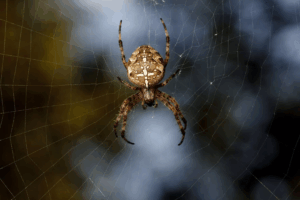
However, the most widely recognized member of this species, the hobo spider, formerly considered dangerous. Today’s studies show that their bites are medically insignificant. Although they may bite if threatened, most encounters are harmless and often go unnoticed.
4.American House Spiders
American house spiders are among the most prevalent indoor spiders throughout North America. These tiny, dull brown arachnids tend to select random spots to create their cobweb-like webs, which are often found in quiet areas of homes.
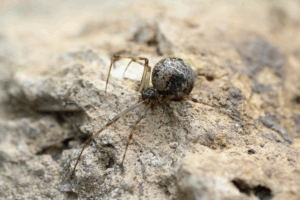
Their legs can be colored differently males typically have yellow legs, while females have orange legs. While these spiders may bite if provoked, the effects are minor and not deemed dangerous. They are relatively non-aggressive and more of a nuisance from housekeeping than a health problem.
5.Harvestmen
These are often confused with spiders but are actually of a different order called Opiliones. Harvestmen can easily be identified by their rounded shape, which has no clear demarcation between the head and abdomen as with true spiders. Harvestmen tend to be gray or brown in color and possess long, thin legs.
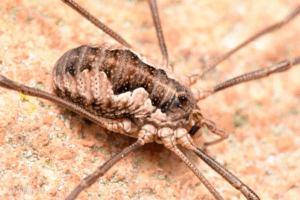
They are different from cellar spiders as they are not venomous and not harmful to people. They tend to inhabit the outdoors places such as gardens and woodlots, but also can be encountered in garages and crawlspaces.
6.Brown Recluse
Brown recluse spiders are among the most medically significant spiders found in the U.S., especially in the Midwest and South. They are recognized by a violin-shaped mark on their back and a tendency to hide in quiet, undisturbed spaces like closets, attics, and storage areas.
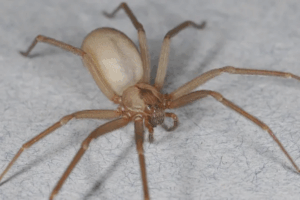
Their bites, while rare, can cause serious skin reactions and are most likely to occur when the spider is unintentionally disturbed. Preventative measures such as shaking out clothing and using gloves during cleaning can help avoid accidental bites.
7.Black Widow Spiders
Black widow spiders physical features include shiny black bodies and the signature red hourglass marking on the underside of their abdomen. Though both black and brown widows exist, the black widow is more commonly recognized due to its potent venom.
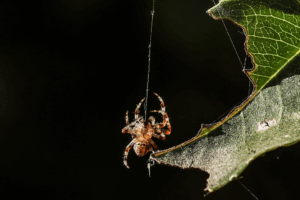
These spiders prefer secluded, sheltered areas and generally avoid contact with humans. While not aggressive, females may bite if they feel threatened, particularly while protecting their eggs. Bites can result in muscle pain, cramps, and other systemic symptoms, requiring medical attention in some cases.
8.Grass Spiders
Grass spiders are quick-moving members of the Agelenid family and are often seen darting across lawns, shrubs, and small cracks in outdoor spaces. Their webs resemble sheets with a funnel-shaped retreat at one end.
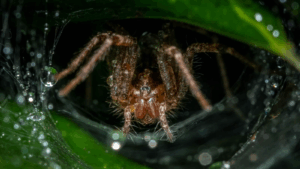
These spiders are typically yellowish to brown with dark stripes running along the length of their bodies. While they are venomous, their bites are not considered dangerous to humans. Bites usually occur only when they feel cornered or provoked.
9.Orb-Weavers
Orb-weaver spiders are best known for their elaborate, wheel-shaped webs, which are often spotted in gardens and wooded areas. With nearly 180 species found globally, orb-weavers range in color from reddish-brown to gray and typically have a distinctive stripe down their backs.
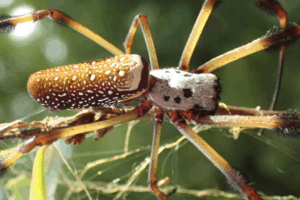
These spiders are non-aggressive and tend to retreat when approached. Although they may bite in self-defense, their venom is not harmful, and the sensation is similar to a mild bee sting.
10.Yellow Sac Spiders
Yellow sac spiders are commonly encountered both indoors and outdoors, where they hide in small silk sacs they create in corners and crevices. These spiders vary in color yellow, brown, or even green and can be hard to distinguish from other species.
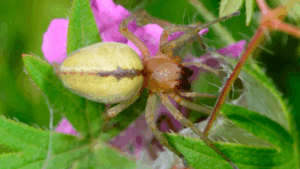
They are active at night and may bite if disturbed, with their venom containing cytotoxins that can cause painful reactions. Symptoms often appear a few hours after the bite and may include redness, swelling, burning, nausea, or headaches, making caution necessary when dealing with them.
Conclusion
While most spiders are harmless and even helpful in controlling pests, a few can pose health risks when disturbed. Recognizing the type of spider you’re dealing with helps in managing them safely and responsibly.
FAQs
Q1: Are all spiders dangerous to humans?
No, most spiders are harmless and pose no threat to humans.
Q2: What should I do if I get bitten by a spider?
Clean the area, apply ice, and seek medical help if symptoms worsen or if you’re unsure about the spider type.
Q3: How can I prevent spiders from coming into my home?
Keep your space clean, seal cracks, and reduce clutter, especially in dark and damp areas.
Spot a Spider? Call Us Now!
You spot a spider, we handle the rest. Just call our pest control professionals and let us make your home spider-free in no time. With Safe Pest Sol on the job, you can relax and enjoy a spider-free space!

